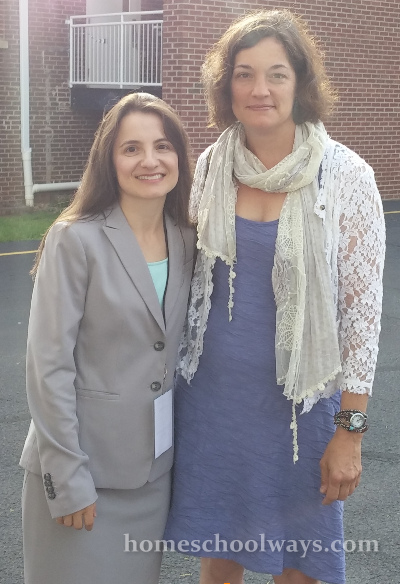Homeschooling is different for every family, but there are six basic approaches or methods:
1. Classical – A child’s brain development naturally sets the stage for the trivium: primary school, or the grammar stage, during which learning is based on concrete tasks and memorizing facts; middle school or the logic stage, during which learning tackles abstract concepts and reasoning from cause to effect; and high school or the rhetoric stage, when learning focuses more on expressing what has already been acquired. This is the method I lean toward heavily.
2. Charlotte Mason – A British educator of the nineteenth century, Ms. Mason is more relevant today than ever, in my opinion. Her emphasis on living books, i.e. regular books (as opposed to textbooks/workbooks), narration, and nature study would bring life into any educational pursuit. I like this approach very much and use it to balance my natural propensity toward rote memorization. Get more information about Charlotte here. Want a free curriculum with a Charlotte Mason approach? Get it here.
3. Unit Studies – The method which took me the most to understand and appreciate, even though I studied under one of its biggest proponents. The Prussian educational method of separating knowledge into subjects, which was used in my public school, had indoctrinated, errr…. trained me well. Once I got unit studies though, I used Before Five in a Row and came to a new level of freedom in my mind about home education. The mother of all unit study curricula is Konos. I find I am not brave enough for it, but it obviously works for a great number of homeschoolers. In conclusion, I use this method sparingly.
4. Traditional – Most of us learned like this in a public school somewhere around the world. Textbooks provide the theory, which you apply while filling out workbooks. Homeschoolers tend to call this method dry and boring, but some children thrive on this. I have a three-year old who asks for worksheets almost every day. Rod and Staff, Abeka and Bob Jones are examples of traditional curricula. Personally, I use Rod and Staff and anything I can find online. There is a vast array of worksheets online. Don’t get overwhelmed.
5. Unschooling – Also known as relaxed homeschooling or delight-based or child-led. I could not be an unschooler, but I like the emphasis on the child’s desire to look into a certain topic. I recognize that the highest point of learning is when a child asks a question. I capitalize on those teaching moments throughout the day. However, I need the structure of a schedule and a carefully laid out curriculum to feel sane.
6. Eclectic – People like me, who pick and choose at least two different methods, curricula and approaches to tailor the education of their children, are called eclectic homeschoolers.
I am leaving out Montessori, Waldorf, independent study, umbrella/charter/online schools and other methods. The best book I have found, which I think any homeschooler should have on their reference shelf, is Cathy Duffy’s “101 Top Picks for Homeschool Curriculum“. The first few chapters explain methods and learning styles. You will walk away with a clearer picture of what your homeschool should be like.
Special note on The Moore Formula
For a balanced education, i.e. one which trains the hand, the heart and the head, taking into consideration a child’s readiness level for formal education, I always keep in mind The Moore Foundation’s philosophy. In fact, it is the overarching method I keep in mind before making any decision in my homeschool.

